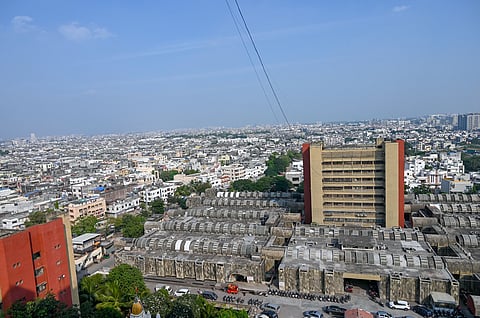

India’s cities are fast emerging as powerful drivers of the country’s clean energy transition, according to a new report by World Resources Institute (WRI) India.
Released at WRI India’s annual flagship conference ‘Connect Karo’, the report titled How Cities Can Support India’s Energy Transition underscores the pivotal role of urban centres in achieving the nation’s climate and economic ambitions.
The report analysed 10 urban centres—Bengaluru, Chennai, Delhi NCT, Indore, Kochi, Nagpur, Pune, Rajkot, Surat, and Shimla—highlighting how cities are combining national policies with local innovations to accelerate decarbonisation. From rooftop solar to LED streetlighting, local governments are driving innovation, savings, and sustainability — but uneven progress and capacity gaps remain.
“While much of India’s energy transition is currently being driven at the state level, there is significant scope of upwards of 200 GW of energy that can potentially be harnessed from urban solar PV,” said Madhav Pai, chief executive of WRI India. “We also need to look closely at demand-side actions where cities will play a key role as significant consumers of energy.”
India has committed to achieve 500 gigawatts (GW) of non-fossil fuel electricity capacity by 2030 and reaching net-zero emissions by 2070. The report stresses that cities, already contributing up to 60 per cent of the country’s GDP, are uniquely positioned to be “natural aggregators of demand” and testing grounds for innovative solutions.
Indore, for instance, has become a national example by creating a carbon market consultancy service through its Smart City Special-Purpose Vehicle, assisting other government agencies—an approach not found elsewhere in the country. Similarly, Kochi and Pune are pushing ahead with electrified public transport, while cities like Surat are using digital monitoring systems to improve energy efficiency in municipal services.
But the report also acknowledges uneven progress and pressing challenges. Many cities lack adequate technical expertise, financing mechanisms, and institutional capacity to scale up energy transition initiatives. External support is often necessary for project design and implementation. To overcome these hurdles, WRI India calls for a collaborative approach involving local governments, state utilities, private sector partners, and civil society.
Urbanisation adds further urgency. By 2040, India’s cities are expected to absorb 270 million additional people. According to the International Energy Agency (IEA), residential electricity demand—which grew from 4 per cent of national consumption in 1997 to 24 per cent in 2019—is projected to account for half of total consumption by 2040. The rapid growth in household appliance use, coupled with expanding transportation demand, could place enormous strain on India’s energy systems unless cities shift towards cleaner and more efficient energy use.
“Cities are natural aggregators of demand and can help manage flexibility on both the supply and demand sides,” the report notes, urging integrated interventions across transport, buildings, waste management, and water supply. Pai added, “Urban action is critical—not just for meeting energy needs, but for improving lives through better air quality, health outcomes, and climate resilience.”
The findings suggest that as India pursues its aspiration of becoming a $30 trillion economy within the next two decades, cities will not only power economic growth but also shape a cleaner, more sustainable energy future.